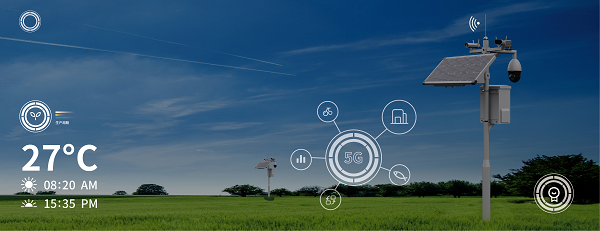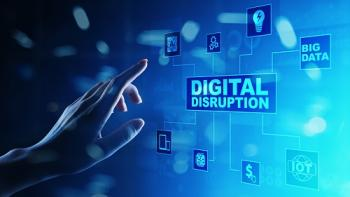How can traditional industries achieve digital transformation?
At present, with the innovative application of big data, artificial intelligence, blockchain and 5G technology, the digital economy with digital information as the key production factor is booming, giving birth to new business models and economic paradigms, and promoting global competition into the field of digital economy. According to the IDC report, by 2023, more than 50% of the global economy will be driven by the digital economy.
The wave of digital transformation is sweeping across thousands of industries, and the digital transformation and upgrading of traditional industries has started one after another. According to the feedback of Yu Gangjun, general manager of Utepro’s domestic business department, users’ demands for digital solutions at this stage are mainly reflected in the improvement of management, production automation level and production efficiency through digital and intelligent technical means, so as to achieve the goal of becoming a traditional industry leader. The purpose of upgrading and transformation.
How can traditional industries achieve digital transformation?
Digital technology is not an abstract concept, it is implemented into multiple links in the industry with specific technical solutions.
Taking the digital transformation of traditional agriculture as an example, Yu Gangjun pointed out that the current agricultural field generally has problems such as low production efficiency, unsalable products, food quality and safety, low product prices, production efficiency needs to be improved, and lack of new procurement methods.
The digital agriculture solution uses the Internet of Things, big data and other technologies to build digital farmland, which can realize functions such as digital cloud exhibition, food traceability, crop monitoring, production and marketing connection, etc., promote the high-quality development of agriculture and the overall revitalization of the countryside, and allow farmers to share the digital economy. Development dividends.
(1) digital agriculture
In particular, Yu Gangjun took the UTP digital agriculture solution as an example to describe the digital upgrade measures of traditional agriculture and the comparison of the real efficiency improvement of agricultural production after the intervention of technologies such as the Internet of Things.
According to Yu Gangjun, Fujian Sailu Camellia Oil Digital Camellia Garden is one of the typical cases of Utepp’s many digital application projects. The camellia oil base used traditional manual management methods before, and it was impossible to monitor the four conditions of agriculture (moisture, seedlings, insects, and disasters) in a timely manner. Large areas of camellia forests were managed according to traditional methods, which cost high labor costs and was difficult to manage. At the same time, the lack of personnel quality and professional ability makes it difficult to improve the quality and output of camellia. During the annual camellia picking season, anti-theft and anti-theft have also become a headache for enterprises.
After importing the UTEPO digital agriculture solution, through data-based control and visual traceability of camellia oil planting and camellia oil production in the base, the data and the pest and disease situation in the park can be viewed anytime, anywhere, and the 360° omnidirectional infrared spherical camera can monitor clearly and intuitively. Real-time viewing of the growth of crops in the planting area, the implementation of remote control of equipment, etc., to improve the production efficiency and product quality of the base, and to reduce the occurrence of illegal harvesting.
According to real data statistics, after the introduction of the above-mentioned digital solutions, Fujian Sailu Camellia Oil Digital Camellia Garden has reduced the summary management cost by 30%, the incidents of stealing by 90%, and the product sales increased by 30%. At the same time, the application of Utepro’s “cloud exhibition” digital platform, with the help of blockchain trust mechanism and interactive experience functions such as live broadcast and on-demand, also breaks the information barriers of consumers’ cognition of products and enterprises, and enhances buyers and consumption. Consumers’ trust in the business speeds up purchasing decisions.
On the whole, Fujian Sailu Camellia Oil Tea Garden has been upgraded from a traditional tea plantation to a digital camellia plantation. Two major measures have been reformed. First, through the global deployment of hardware facilities such as intelligent perception system, power supply and communication system, agricultural work has been realized. Grid management and agricultural data monitoring management; the second is to rely on the “cloud exhibition” digital agriculture 5G traceability display system to provide traceability and digital support for the circulation of agricultural products, which not only facilitates purchasers of agricultural products, but also realizes the connection of agricultural product circulation information At the same time, it is also convenient for the farm to carry out agricultural management on the mobile terminal.
The technical support behind this, in addition to key technologies such as the Internet of Things, artificial intelligence, 5G, and big data, effectively guarantees the technical solutions for the power supply and networking of the tea garden global intelligent IoT terminal, 5G communication, and “viewing the exhibition on the cloud”. ——”Network and Electricity Speed Link” is an indispensable basic technical support.
“Netpower Express integrates innovative technologies such as AIoT, cloud computing, big data, blockchain, Ethernet, optical network and wireless broadband network, edge computing and PoE intelligent power supply. Among them, PoE, as a forward-looking technology, It helps to realize the rapid installation, networking, power supply and intelligent operation and maintenance of front-end IoT terminal equipment, which is safe, stable, low-carbon and environmentally friendly, and easy to install and maintain. The EPFast solution with PoE technology as the core can effectively Realize the unification of communication and Internet of Things access, system miniaturization, intelligent equipment, and low energy consumption.” Yu Gangjun said.
At present, EPFast technology solutions have been widely used in digital agriculture, digital governance, digital buildings, digital parks and other industries, effectively boosting the digital transformation of industries and promoting the development of the digital economy.
(2) digital governance
In the digital governance scenario, the digital solution of “Network Speed Link” covers hazardous chemicals management, food safety management, cold storage monitoring, campus safety, emergency management, market supervision and other fields. “Shunfenger” listens to the opinions of the people and handles their opinions and suggestions at any time, which is both accurate and efficient, and brings good news to the government’s grassroots governance.
Taking cold storage monitoring as an example, by deploying high-definition cameras at entrances and exits, warehouses, key areas and other places, using a distributed AI system, it can monitor the information of vehicles, personnel and environment entering and leaving the cold storage at all times and continuously, and form an automatic alarm mechanism. The institution’s intelligent supervision platform forms a unified AI supervision system. Unify remote supervision, improve supervision efficiency, and integrate data with existing emergency command centers and supervision systems to form a digital governance system with comprehensive management and control capabilities.
(3) digital architecture
In the building, the digital solution of “Network Speed Link” integrates network transmission, covering video surveillance, video intercom, anti-theft alarm, broadcasting, parking lot, access control card, wireless WIFI coverage, computer network, attendance, smart home It can realize the unified networking and power supply management of various network devices. The benefits of deploying “Grid-to-Grid” in buildings are that it can reduce installation and maintenance costs, while being efficient and energy-saving. Taking the smart lighting system as an example, the use of PoE technology not only requires no additional power supply, but also realizes intelligent control of Led lights and strengthens energy consumption management, so as to achieve the effect of energy saving, emission reduction, green and low carbon.
(4) digital park
The “Internet and Power Express” digital park solution focuses on park construction, renovation, and operation and maintenance services. By deploying access networks, transmission networks, and core networks, it builds a digital park that takes into account convenience, security, and the best overall cost. Networked Power Solutions. The solution covers various subsystems of the park, including video surveillance, video intercom, anti-theft alarm, entrance and exit, and information release.
At present, no matter from the needs of industrial transformation and upgrading, or from the global economic development trend, as well as artificial intelligence, big data, communication technology and other support, and national development strategies, China’s digital industry transformation driving conditions are ripe.
A new round of science and technology represented by emerging technologies such as information technology and artificial intelligence is maturing and accelerating its application. It is changing the traditional production organization and way of life at an unprecedented speed and scale, driving the rise of a new round of industrial revolution and providing economic and social benefits. The development has injected a strong impetus. Traditional manufacturing, agriculture, service industries and other fields are further integrating with the Internet, and the digital transformation of the real economy will also become a new engine for high-quality economic development. In these industries, extensive device connectivity has driven the transformation of information technology from mobile Internet to Internet of Everything.


